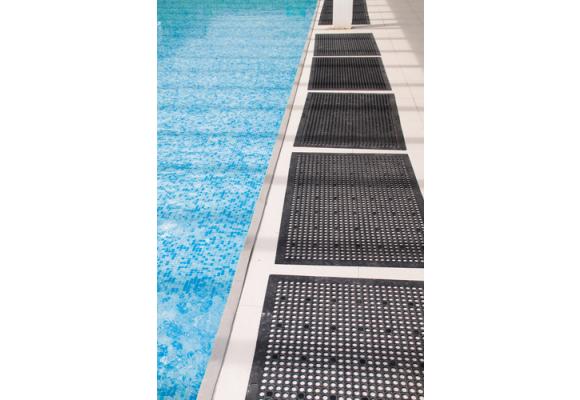
How to Look After Your Anti Fatigue Mat
After buying and installing the right anti-fatigue mat for your business, it’s important to maintain it and keep it clean and looking new. Planning the right maintenance program will ensure that your anti-fatigue mat will remain functional and effective for many years. Here’s a guide to looking after your anti-fatigue mat:
Post-installation clean-up
a) Lightly-soiled surfaces First, use a broom to remove any debris, grit, sand and soil from the surface. Then vacuum the whole mat using a high CFM vacuum to remove fine dirt and grit. Following this, check that adhesive hasn’t spilt onto or leaked through the seams. If so, scrape it off or use a neutral cleaner with a high concentration. And finally, damp mop the mat surface until all dirt, sand and grime is removed. You can use a string mop or a microfibre flat mop with a neutral cleaner (pH of 7-9). Remember, don’t use mineral spirits, paint thinners or strippers, and petroleum-based products to clean your anti-fatigue mat.
b) Heavily-soiled surfaces Use a broom and a high CFM vacuum to get rid of debris, grit, sand and soil from the surface. If the mat’s very dirty, then it’s best to hand mop the dirtiest areas first. Now you can continue cleaning the whole mat with the hand mop if possible, but if not then you can use a buffer or auto scrubber with a mild pad or a soft nylon brush. If you’re going to use the buffer, first wet the mat and then buff an area that you can buff and vacuum in 15 minutes. Don’t allow the cleaning solution to stand on the mat for a long period of time. After buffing the area, use a wet/dry vacuum to pick up the solution and repeat if you need to. For very heavily-soiled surfaces or restorative cleaning, you can repeat the process using an aggressive black pad to get rid of the dirt. And finally, rinse the mat with clean water using the hand mop or an auto scrubber. If work still needs to be done after installing the anti-fatigue mat, be sure to cover it with either plastic sheeting, tarps or Kraft paper.
Maintenance for different anti-fatigue mats
- Carpet and entrance mats – Shake the mats outside to get rid of dirt and debris, or you can use a low-pressure and low-temperature hose to wash them off. Make sure the carpet mats are dry prior to returning them inside. Carpet mats should be vacuumed daily and extracted or shampooed when they become dirty.
- Wet-area mats – These are moulded rubber and PVC mats. To remove oils, use a high-pressure hose and hot water. Then clean the mats using mild soap or detergent with a pH between 4-9. Don’t use steam, degreasers or caustic chemicals, and don’t clean the mats in the washing machine or have them scrubbed mechanically.
- Dry-area mats – This includes spongecote, PVC sponge and urethane mats. Sweep the mats on a regular basis or clean the surface with a dry mop. You can also wet mop the mats using mild soap or detergent with a pH between 4-9.
- Runner mats – Use a broom or vacuum for sweeping the surface. You can also use a wet mop with mild soap to clean the mats.
- ESD mats – Regularly sweep clean or dry mop the mat surface. Additionally, you can wet mop or wipe the mats with mild soap or a static-control cleaning solution that doesn’t leave any residue. This will keep the mats functioning efficiently.
Regular maintenance
Keep your anti-fatigue mat looking good and long-lasting by sweeping, vacuuming and mopping it on a regular basis. It’s important that you don’t get a lot of dirt and grime on the mat. The following looks at other ways to regularly care for your anti-fatigue mat:
- Have entrance door mats – This avoids dirt and grit from getting inside and dirtying the anti-fatigue mats.
- Clean up grease spills right away – Apply solvent and then rinse off immediately.
- Sweep or vacuum the mat on a daily basis – This removes dirt, dust and sand and prevents damage caused by fine particles of dirt, stone and grit. However, if the mat isn’t always being used, then you can just mop it occasionally.
- Remove dirt with an auto scrubber – A scrubber with a microfibre pad can clean dirt build-up and trap dirt in corners and depressions.
- Don’t use strong and abrasive cleaners – Use mild cleaners instead to avoid permanent damage to the mat, as well as all-purpose cleaners and fabric softeners that can be diluted and applied on the mat.
- Remove wax build-up with a stripper – Follow the manufacturer’s guidelines on buying and using the stripper.
- Don’t accumulate water on the mat – Water will make the mat slippery and cause the adhesive to become ineffective.

